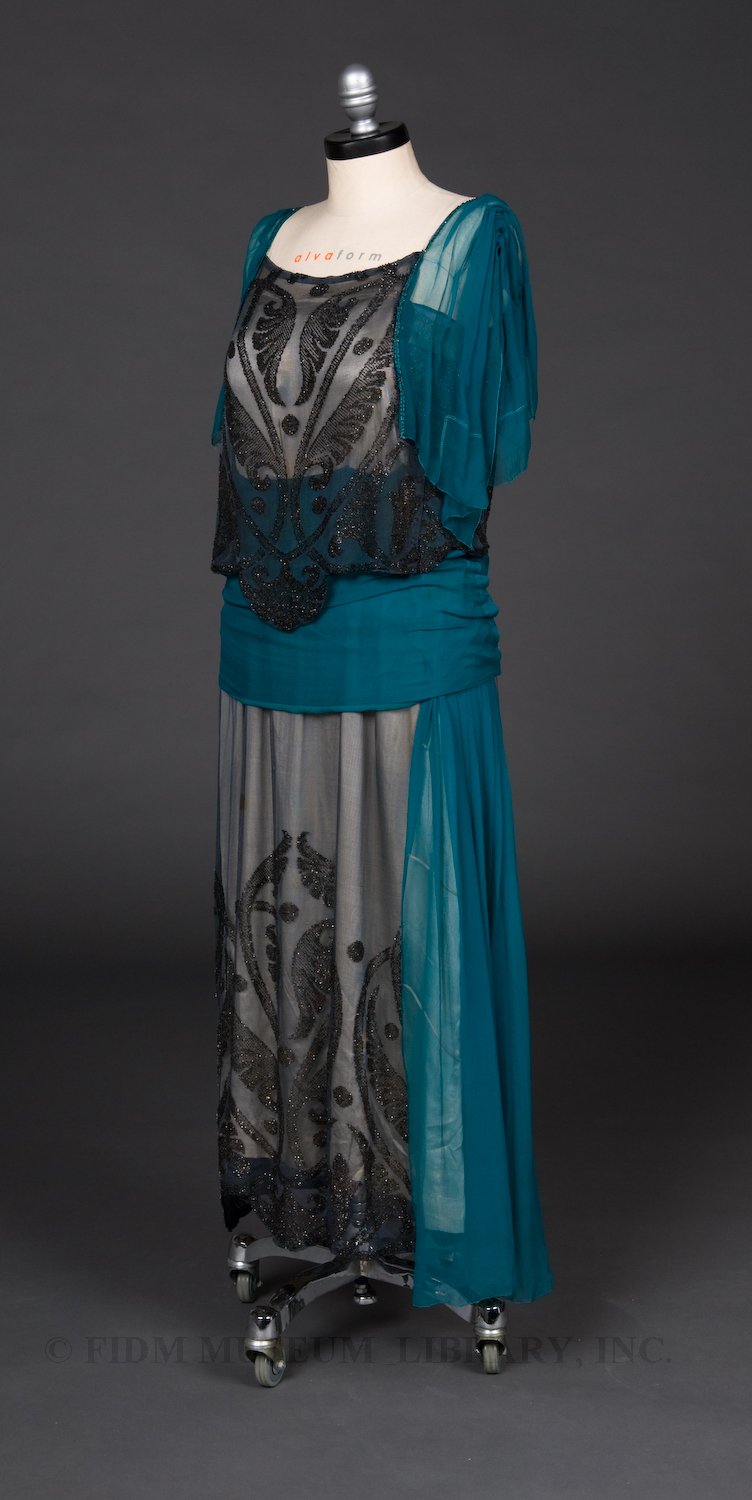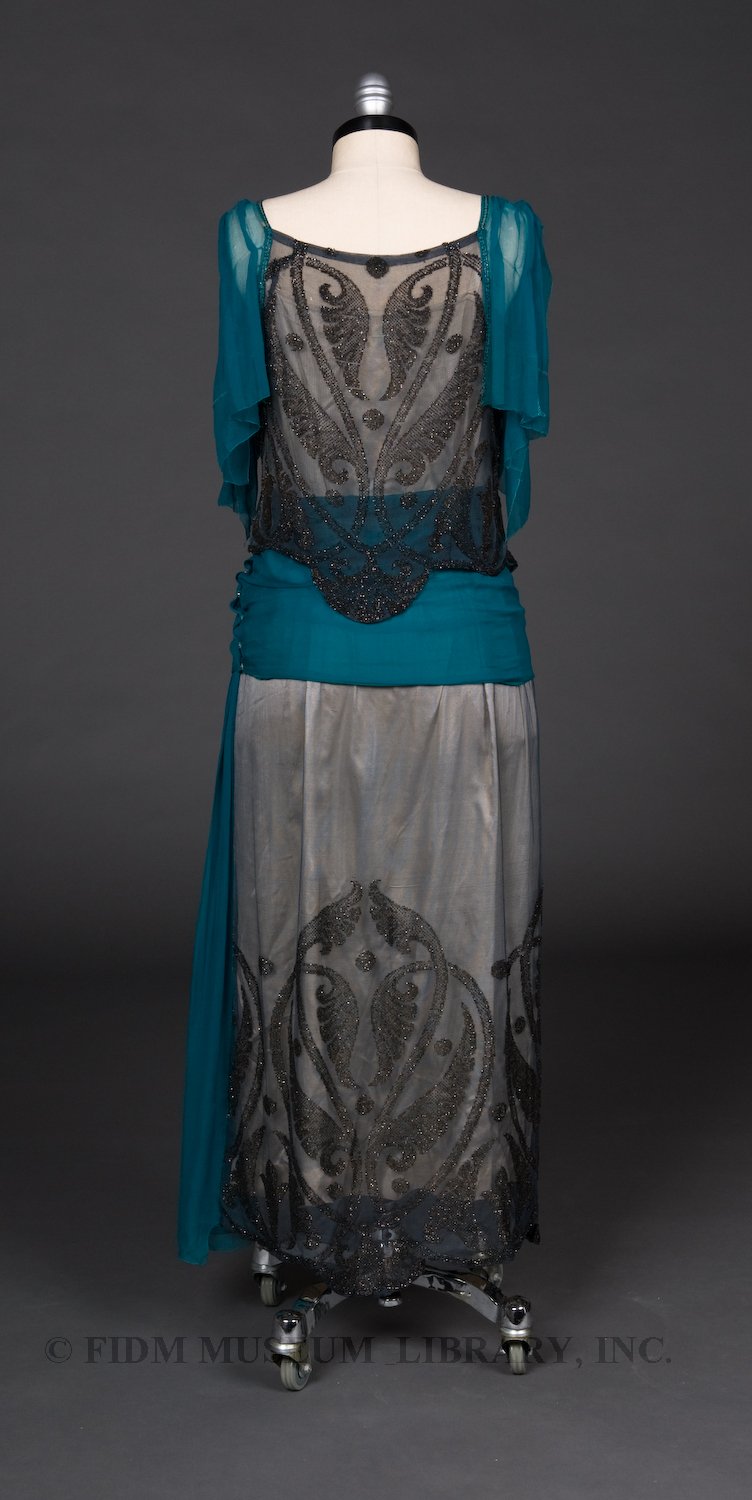 Evening gown
Evening gown
1919-1920
Gift of Penny Schnabel
2004.821.3
This turquoise and black evening gown does two things at once: it references popular styles of the early 1910s and anticipates fashions of the later 1920s. From about 1911 through 1915, the tunic silhouette was very fashionable, appearing in both day and evening silhouettes. A c. 1912 tunic dress from our collection demonstrates how orientalist and classical elements were combined to create this consciously opulent silhouette. Like the dress pictured above, our c. 1912 tunic dress features a black and turquoise color scheme. Unlike the c. 1912 tunic dress, which features a high, defined waistline, this dress features a relatively undefined waistline made lower by the wide turquoise sash. As the 1920s progressed, a defined waistline disappeared almost entirely, though it was sometimes suggested by draped sashes. A 1919 report on Paris fashions proclaimed the importance of the waist sash in evening gowns: "They are used literally by the French to make a gown, for on the lines of the sash…depends the effect of the finished creation."1 One evening gown described in this article featured a wide gold sash, draped low around the hips, tied at one side and trailing nearly to the hem of the gown.
Like many evening dresses of the 1920s, this dress features beaded decoration on a lightweight net ground. Seed beads are arranged in a scrolling acanthus leaf pattern on both the bodice and skirt. The bead design is incorporated into the scalloped hem seen on both top and bottom. Many embellished garments from this era show considerable damage because lightweight ground fabrics can't support the weight of the applied decoration. If stored improperly (hanging!) the beading or other embellishment pulls, strains or rips the ground fabric. Judging by its excellent overall condition, this evening dress was stored laying flat and out of direct light.
The wearer of this dress had a secret weapon: a hidden bust improver. Visible under the black net is an attached cream silk charmeuse slip. Lining the bust of the slip are cotton tulle ruffles. Like today's Wonderbra, these ruffles created the illusion of a larger bust. Interior bust improvers are not at all uncommon in women's historic dress. As is the case here, bust improvers were often constructed from layers of ruffled fabric attached inside the bodice of a garment. As brassieres became more widely worn, additional padding became a feature of the bra itself, not the exterior garment.
1 "Midwinter Paris Fashions." New York Times 7 Dec. 1919: XX7.




So fabulous- What a great piece!